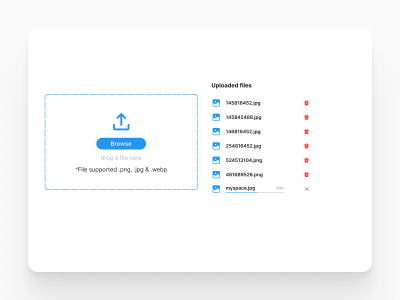Looking to turn your passion for photography into a side hustle? Shutterstock is one of the most popular platforms for photographers to sell their images and earn extra cash. Whether you’re a hobbyist or a professional, it’s a great way to monetize your creative work and reach a global audience. But getting started can seem a bit overwhelming at first. Don’t worry! In this guide, I’ll walk you through the basics of selling photos on Shutterstock and help you prepare your images for success. Ready to start turning your shots into income? Let’s dive in!
Preparing Your Photos for Submission

Before you upload your photos to Shutterstock, it’s essential to make sure they meet the platform’s quality standards and are optimized for sale. Proper preparation can make the difference between your images getting approved or rejected, so take your time to get it right.
1. Choose Your Best Shots
Start by selecting only your top-quality images. Shutterstock reviewers look for sharp, well-composed photos with good lighting and clarity. Avoid images that are blurry, overexposed, or poorly composed. Remember, quality over quantity is key here.
2. Edit and Enhance Your Images
Use editing software like Adobe Lightroom or Photoshop to enhance your photos. Adjust brightness, contrast, and colors to make your images stand out. But be careful not to over-edit; natural-looking photos tend to perform better. Also, remove any distracting elements or blemishes.
3. Check Image Specifications
- Resolution: Shutterstock recommends images at least 4 megapixels (e.g., 2400×1600 pixels).
- File Format: Save your images in JPEG format with an sRGB color profile.
- File Size: Max file size is 50MB.
4. Add Relevant Metadata
When uploading, include clear, descriptive titles, keywords, and descriptions. Use relevant keywords that accurately describe your image to help buyers find your work easily. Think about what someone might search for when looking for an image like yours.
5. Ensure Legal and Model Releases are in Place
If your photos include recognizable people or private property, make sure you have the necessary releases signed. Shutterstock requires legal releases for images featuring people or trademarks to protect both the seller and buyers.
By taking these steps, you’ll set yourself up for success and increase your chances of having your photos accepted and purchased. Remember, the more polished and relevant your images are, the more likely they’ll attract buyers. Happy shooting and editing!
Understanding Shutterstock Submission Guidelines

Before you start uploading your stunning photos to Shutterstock, it’s super important to get familiar with their submission guidelines. Think of these as the rules of the road—they help ensure your images are approved quickly and reach a wide audience without any hiccups.
Shutterstock has specific standards to maintain quality and consistency across their platform. Here are some key points to keep in mind:
- Image Quality: Your photos should be high-resolution, sharp, and well-exposed. Shutterstock recommends a minimum of 4 megapixels, but higher is always better.
- File Format: Upload images in JPEG format with an sRGB color profile. This ensures your photos look great on all devices.
- Content Restrictions: Shutterstock is strict about content that includes copyrighted material, logos, or identifiable people without model releases. Make sure you have the rights to all elements in your images.
- Model & Property Releases: If your photos feature recognizable individuals or private property, you’ll need to provide release forms. This is crucial for legal reasons and helps your images get accepted faster.
- Metadata & Keywords: Accurate titles, descriptions, and keywords are essential. They help buyers find your photos easily, increasing your chances of sales.
To save yourself time and frustration, always review Shutterstock’s detailed contributor guidelines on their website. Staying compliant not only speeds up the approval process but also builds your reputation as a reliable contributor.
How to Upload Your Photos Effectively

Great! You’ve taken some fantastic shots and are ready to upload. But how do you do it in a way that maximizes your chances of approval and sales? Let’s walk through the process step-by-step.
Step 1: Prepare Your Files
Make sure your images meet the quality standards we discussed earlier. Rename your files with descriptive names that include relevant keywords—this helps with organization and discoverability.
Step 2: Log into Your Shutterstock Contributor Account
If you haven’t signed up yet, it’s easy—just create an account on Shutterstock’s contributor portal. Once logged in, you’ll see the dashboard where you can start uploading.
Step 3: Use the Upload Tool
Shutterstock offers a user-friendly upload interface. You can upload images directly from your computer or drag and drop multiple files at once. For larger batches, consider using their bulk upload option to save time.
Step 4: Add Metadata and Keywords
This is a crucial step. Be thorough and strategic:
- Title: Use clear, descriptive titles that reflect the image content.
- Description: Write detailed descriptions to help buyers understand what they’re looking at.
- Keywords: Use relevant keywords—think about what a buyer might search for. Use a mix of broad and specific tags to cover all bases.
Step 5: Select Appropriate Categories
Choose the right categories that best fit your photos. This improves discoverability and ensures your images are shown to the right audience.
Step 6: Submit for Review
Once everything looks good, hit the submit button. Shutterstock’s review team will then evaluate your images, which usually takes a few days. If approved, your photos go live and are ready to be sold!
Pro tip: Keep track of your submissions and feedback. If some images get rejected, review the comments, make necessary adjustments, and resubmit. Persistence pays off!
Uploading your photos effectively isn’t just about hitting the button—it’s about making sure each step maximizes your chances of success. Follow these tips, stay consistent, and soon you’ll be building a steady stream of extra cash from your photography on Shutterstock.
Optimizing Your Photos with Keywords and Titles
Alright, so you’ve uploaded some fantastic photos to Shutterstock—congratulations! But here’s the thing: even the best images won’t sell if no one can find them. That’s where optimization comes into play. Think of your keywords and titles as the signposts that guide potential buyers straight to your work. The better you get at this, the more visibility you’ll gain—and the more sales you’ll likely see.
First off, titles. Your photo’s title should be clear, descriptive, and straightforward. Instead of something vague like “Beautiful Scene”, go for something specific like “Sunset Over Mountain Lake with Reflection”. This helps buyers quickly understand what they’re looking at. Keep it natural and avoid keyword stuffing—your goal is to make it easy and appealing to human eyes and search engines alike.
Next up: keywords. Shutterstock allows you to add up to 50 keywords per image, so make full use of them! Be as specific as possible, including:
- Colors (e.g., “blue,” “golden”)
- Subjects (e.g., “mountains,” “city skyline”)
- Settings or moods (e.g., “sunny,” “serene”)
- Activities (e.g., “hiking,” “cooking”)
Don’t forget to include synonyms and related terms. For example, if your photo features a “bicycle,” also add “bike,” “cycling,” or “cycling road.” This broadens your reach and increases the chances of your image appearing in different search queries.
Helpful tip: use the Shutterstock keyword tool or research popular images in your niche to see what keywords are trending. Also, review similar images that rank well and note their keywords and titles for inspiration.
| Aspect | Best Practices |
|---|---|
| Title | Be descriptive, specific, and natural. Avoid clickbait or vague phrases. |
| Keywords | Use relevant, varied, and specific terms. Maximize the number of keywords without keyword stuffing. |
| Additional Tips | Research trending keywords, analyze top-performing images, and update your tags periodically. |
By investing time in crafting thoughtful titles and selecting precise keywords, you’re making your photos much more discoverable. Remember, visibility equals sales—so the effort you put into optimization can pay off big time!
Tips for Increasing Your Photo Sales on Shutterstock
Now that your photos are optimized and ready to go, how do you actually boost your sales? Don’t worry—there are plenty of simple, effective strategies to help you stand out and attract more buyers on Shutterstock.
1. Upload Consistently and in Batches
Frequent uploads keep your portfolio fresh and increase your chances of appearing in search results. Instead of uploading one or two photos sporadically, aim to add new images regularly—perhaps weekly or bi-weekly. Batch uploading also saves time and helps you maintain a steady flow of content.
2. Focus on Trends and Niche Markets
Stay ahead of the curve by paying attention to trending topics—like sustainability, remote work, or specific seasons—and create images around these themes. Also, consider specializing in a niche you’re passionate about, such as food photography, travel scenes, or business concepts. Niche images tend to have less competition and attract targeted buyers.
3. Promote Your Portfolio Outside Shutterstock
While Shutterstock’s marketplace is powerful, don’t hesitate to share your work on your social media channels, personal website, or photography forums. Building a personal brand and directing traffic to your Shutterstock portfolio can lead to more exposure and sales.
4. Use Collections and Curated Sets
Group related images into collections or sets. Buyers often look for cohesive sets for projects, websites, or presentations. Well-organized collections can increase the likelihood of multiple sales from a single buyer.
5. Keep an Eye on Analytics and Adjust
Regularly review Shutterstock’s analytics to see which images perform best. Notice patterns—are certain subjects or styles selling more? Use this data to guide your future uploads and focus on what works.
6. Offer High-Quality, Unique Content
Quality always trumps quantity. Invest in good equipment, pay attention to composition, lighting, and editing. Unique and authentic images tend to stand out more than generic ones.
To sum it up: consistency, niche focus, promotion, organization, analytics, and quality are your best friends when aiming to increase your Shutterstock sales. Keep experimenting, stay patient, and over time, you’ll see your efforts pay off with more downloads and extra cash in your pocket!
Monitoring Your Earnings and Performance
Once you’ve started uploading your fantastic photos to Shutterstock, you’ll naturally want to keep an eye on how well they’re performing and how much money you’re earning. Monitoring your earnings isn’t just about bragging rights; it’s a smart way to understand what types of images resonate most with buyers and to optimize your future submissions.
Shutterstock provides a user-friendly dashboard where you can track your sales, see which images are popular, and understand your overall earnings. Here’s what you should focus on:
- Sales Reports: Check your sales reports regularly to see which images are generating the most income. This can help you identify trends and tailor your future photo shoots accordingly.
- Top Performing Images: Spotlight your best-sellers. These images are your goldmine—they’re proven winners that continue to attract buyers over time.
- Download Data: Look at which customers are downloading your images. Sometimes, specific industries or regions have different preferences, and knowing this can guide your content creation.
- Royalty Payments: Keep track of your accumulated royalties. Understanding your earnings over time allows you to set realistic goals and plan your efforts.
It’s also helpful to set up regular check-ins—weekly or monthly—to analyze your performance. This habit gives you insights into what’s working and what might need improvement. For example, if you notice that images with certain themes or color schemes earn more, you can focus on producing similar content in the future.
Remember, patience is key. Stock photography sales can fluctuate, and it might take time for your images to gain traction. But by consistently monitoring your stats, you’ll be better equipped to adjust your strategies and maximize your income potential.
Additional Tips for Maximizing Income from Stock Photography
Now that you’re familiar with the basics and how to track your progress, let’s dive into some extra tips to help you boost your earnings with stock photography. These strategies can make a real difference, especially if you’re aiming to turn your hobby into a steady side income.
1. Diversify Your Portfolio
Don’t put all your eggs in one basket. Upload a variety of images covering different themes, styles, and subjects. This increases your chances of making sales because you appeal to a broader audience. For example, combine lifestyle photos, business images, nature shots, and abstract designs.
2. Keep Up with Trends
Stay aware of current trends in stock photography. For instance, minimalistic designs, diverse representations, and environmental themes are often in demand. Check popular collections or trending searches on Shutterstock to get inspiration.
3. Optimize Your Keywords and Titles
Effective keywords are essential. Use relevant, specific keywords that accurately describe your images. Think about what buyers might search for—be descriptive and include synonyms. Well-optimized titles and tags can significantly increase your images’ visibility.
4. Focus on Quality Over Quantity
While uploading many images is good, prioritize high-quality, well-composed photos. Sharp, properly exposed images with good lighting tend to perform better. Consider investing in a good camera or editing software to enhance your photos before uploading.
5. Participate in Special Collections and Promotions
Shutterstock often runs themed collections or promotional campaigns. Contributing images aligned with these themes can boost visibility and sales. Keep an eye on Shutterstock’s blog or contributor emails for opportunities.
6. Engage with the Contributor Community
Join forums or social media groups where Shutterstock contributors share tips, feedback, and success stories. Learning from others’ experiences can provide fresh ideas and motivate you to keep improving your portfolio.
7. Regularly Refresh Your Portfolio
Update your portfolio periodically by removing underperforming images and adding new ones. Fresh content keeps your profile active and engaging for buyers.
By applying these extra tips, you’ll be well on your way to maximizing your income from stock photography. Remember, consistency, quality, and staying informed are your best allies in this journey. Happy shooting and selling!
Conclusion and Final Thoughts on Selling Photos for Extra Cash
Successfully selling photos on Shutterstock can be a rewarding way to earn extra income, but it requires dedication, quality, and strategic planning. Remember that high-quality, original images with clear subject matter tend to perform better in the marketplace. Consistently uploading fresh content and paying attention to trending themes will increase your visibility and sales potential.
To maximize your earnings, consider the following tips:
- Research market demand: Stay updated on popular categories like travel, technology, or lifestyle to target your photography efforts.
- Optimize your metadata: Use descriptive titles, keywords, and tags to enhance discoverability.
- Maintain quality standards: Edit your photos professionally to ensure they meet Shutterstock’s quality guidelines.
- Be consistent: Regular uploads keep your portfolio active and attract repeat buyers.
While earning extra cash from Shutterstock is achievable, patience and persistence are key. Building a reputable portfolio takes time, but with effort, it can become a reliable source of passive income. Overall, approach this venture as a long-term opportunity to refine your skills, expand your reach, and generate steady earnings from your photography talents.


